In recent years, individuals and corporate donors have increasingly turned to donor advised funds as their structure of choice for charitable giving. According to the National Philanthropic Trust’s 2020 report, “For the tenth consecutive year, there was growth in donor-advised funds (DAFs) in every key metric.” DAF contributions and grant recommendations surged to a record high during the global pandemic lockdown, as evidenced by Fidelity Charitable delivering $236 million in grants to non-profits for COVID-19 relief, delivering support for communities and individuals in need.
Not only is it possible to leverage DAFs for charitable giving, but a potentially even more effective use of DAF capital is to invest the capital impactfully. In addition to serving as a sub-advisor on some of the largest DAF platforms, Pathstone has conducted extensive research into specific ways in which DAF assets are used to amplify impact. In this note we provide a refresher on DAFs, as well as a look at the benefits of their use for investments as well as grants.
DAF Nuts and Bolts
A Donor Advised Fund is a charitable account that is created and maintained by a public charity, which is called the sponsoring organization (alternatively, ‘DAF sponsor’ or ‘DAF host’). Donors benefit by being able to give on their own timeline with a lower administrative burden than a private foundation.
Unlike private foundations, donors are not responsible for up-front legal costs, there is no required payout, and a DAF can be established as soon as a DAF provider receives the donated assets. Once a donor sets up a DAF, they qualify for a tax deduction for the amount that is contributed to the DAF in any given year.
DAFs allow individual or corporate donors to make grants to non-profits or to make impact investments into mission-aligned for-profit companies. While DAFs are officially controlled by DAF providers, a donor advisor retains a significant degree of influence over how these investments and/or charitable contributions are made.
When choosing between a DAF and a private foundation, a donor must consider the amount of the donation, the gifting objectives, the involvement of family members or key personnel, and desired public exposure.
Using a DAF to Mobilize Assets for Impact
By using DAF funds for impact investments, donor advisors can support the issues they care about, then redeploy the returns from those investments to other mission-aligned initiatives in need of capital. Moreover, because the donor advisors are not relying on the returns from the investments to fuel their personal capital needs, they may be more comfortable making investments that are higher risk and provide lower returns than might otherwise be required when positive impact is not factored into the equation. Investments made through DAF capital are often considered ‘below-market’, meaning that the total returns on the investment may be lower than they would be for an investment made in a typical portfolio. The lower return expectation helps open the door to a vast set of additional tools that donors can utilize to better achieve their objectives – investments that fall within a gray zone of return and risk.
Eight Ways DAF Capital Can Be Deployed into Impact Investments
1. Direct Investments in Social Enterprises
A social enterprise is a revenue-generating company, organization or program with a social or environmental mission. A small but growing number of DAF providers offer their donor advisors the ability to make direct investments in non-profit or for-profit social enterprises that are aligned with the donor’s philanthropic priorities. This capacity is particularly valuable for supporting social enterprises that need early-stage capital because they do not yet qualify for established venture funds.
2. Specialized Pooled Funds
Numerous DAF providers have developed philanthropic pooled funds for strategic distribution of aligned grants. Today, DAF providers are increasingly offering products that enable donor advisors to invest assets in alignment with other donor advisors. For example, local community foundations are developing pooled funds to support the growth of their local business communities; national DAF providers have developed pooled funds to facilitate impact investments in industries such as regenerative food systems.
3. Funds for Specialized Initiatives
DAFs are flexible vehicles that can be used in numerous ways to catalyze the development of innovative ideas and facilitate creative financing. For example, they provide an opportunity for diverse stakeholders to come together to make decisions. They are also useful for initiatives that are time-limited and require shared investment, such as a pooled investment fund supported by a consortium of foundations. Moreover, they can be used for initiatives that depend on low-cost and high-risk capital to bring innovative ideas to fruition, such as local small business development projects.
4. Loan Guarantees
Access to capital is one of the most significant barriers to successful development of social enterprises worldwide. Inherent in this challenge is the inability of people with limited credit history to provide collateral for loans. Donor advised funds can provide a solution to these challenges. By establishing relationships with intermediaries who provide loan guarantees in specific geographies, donor advised fund providers can help their donor advisors serve the critical function of providing loan guarantees to social enterprises that need their capital the most.
5. Endowments Invested for Broad Sustainable Impact
An increasing number of donor-advised fund providers are recognizing that investing an endowment for social and environmental return alongside financial return is not only possible but also eminently attractive to many philanthropically minded donor advisors. In some cases, working with their investment advisors, donor advised fund providers are developing broad investment pools in which donor advisors can choose to participate.
6. Endowments Invested for Specific Impact Priorities
A growing number of DAFs now provide donor advisors with the option to invest some or all their DAF assets in the priority issue area of the donor, for example, investments that are made with a gender lens.
7. Advisor Managed Funds
Most community foundations and other public charities with DAFs work with an investment advisor to manage their pooled donor advised fund assets. Some community foundations provide donor advisors with the option to use a “sub-advisor” to manage the assets in the donor advised fund. Sub-advisors can be hired who have specific expertise in investing for social and environmental impact. These relationships can bring the donor relief in knowing that the assets in their donor advised fund are being managed in ways that align with their philanthropic values.
8. Corporate Donor Advised Funds
Corporate DAFs are essentially identical to donor advised funds, although the decision-making about the deployment of capital in a Corporate DAF is typically done by a company’s internal stakeholders, such as employees. Corporate DAFs provide businesses with a simple instrument for making grants in the local community or strategic investments in non-profits or companies that complement their business model.
Donor-advised funds are an important tool for individuals and organizations to consider as they reflect on how to best achieve their philanthropic goals. Give your Pathstone advisor a call or contact us to discuss ways in which you can utilize a DAF structure to mobilize assets for impact.
Please see the PDF version of this article for important disclosures.








